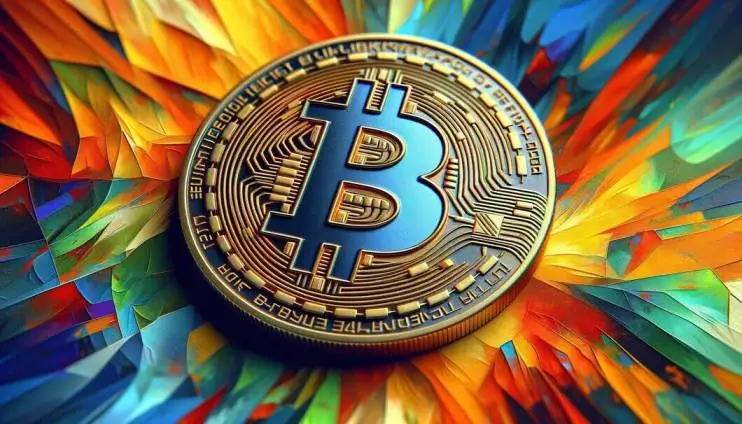
What Are Bitcoin Ordinals?
Bitcoin Ordinals are assets that have had data inscribed (written to) on individual satoshis on the Bitcoin blockchain. Every satoshi is assigned a serial number depending on the sequence in which it was mined. These numbers are called ordinals, and they assist the blockchain keep track of where every satoshi is and who owns it.
By tying the data from an asset to a satoshi, the Ordinal protocol makes it feasible to build unique and scarce digital assets, comparable to non-fungible tokens (NFTs), that benefit from the security and decentralization of Bitcoin’s blockchain. The Bitcoin mainnet Ordinals software was published in January 2023.
How Do Bitcoin Ordinals Work?
The Ordinals protocol provides extra information to the serial numbers of each satoshi, the smallest bitcoin unit. This added info is termed an inscription. A single bitcoin may be split into 100 million satoshis, each worth 0.00000001 BTC. Satoshis are numbered according to the sequence in which they were mined on the Bitcoin network.
Ordinal inscriptions are written to satoshis. This manner, Ordinals inherit the security, immutability, and durability of Bitcoin itself.
How to Mint Bitcoin Ordinals

Bitcoin Ordinals are minted in the same manner as other NFTs, as they are merely specific forms of transactions that leverage the Bitcoin blockchain and network.
-
First, pick a Bitcoin-compatible platform such as Magic Eden.
-
Find the part for inscribing or constructing an Ordinal.
-
Drag your file to the interface, input your text, or specify your domain if desired.
-
Click "Inscribe" or the corresponding button.
The following image is Magic Eden's Ordinals inscribing webpage:
How to Buy, Sell, and Trade Bitcoin Ordinals
Bitcoin Ordinals may be purchased, sold, and exchanged like NFTs. There are various alternative markets, such as Ordinals Wallet and OKX, that allow you to exchange Bitcoin Ordinals.
- Specific guidelines for trading Ordinals may be obtained at each different marketplace; nonetheless, the procedure will normally resemble something like this:
-
Visit any Bitcoin Ordinals marketplace via a web browser or via an app.
-
Create a Bitcoin wallet within an Ordinals marketplace or link to one that has been used in the past.
-
Make sure there is some bitcoin in the wallet to be utilized for trading.
-
Search the marketplace’s many Ordinals collections.
-
Find a Bitcoin Ordinal worth acquiring, and utilize the associated Bitcoin wallet to complete the transaction.
-
Three wallets that support Bitcoin Ordinals are Ordinals Wallet, Xverse, and UniSat. It’s also feasible to trade Bitcoin Ordinals in an over-the-counter (OTC), peer-to-peer (P2P) method.
Bitcoin Ordinals vs. NFTs
-
NFTs are added to their respective blockchain networks in a manner identical to any other transaction on that chain. Bitcoin Ordinals will leverage the blockchain's current network, contributing to the already large Bitcoin network energy needs and minting time is governed by network congestion and fees paid. NFTs on chains that employ proof-of-stake cost substantially less energy and are often quicker.
-
NFTs are frequently minted on systems that are interoperable with many blockchains. This is because most of these networks have grown to be Ethereum-compatible. Ordinals, on the other hand, can only be minted on the Bitcoin blockchain, therefore you have to select one that is Bitcoin-compatible. For example, OpenSea, one of the major NFT markets, is not Bitcoin compatible.
Read Also: Unique Proposition of NFTs
Impact of Bitcoin Ordinals

-
The significance of Bitcoin Ordinals is best seen by the split it has produced among Bitcoin users. This new capability on Bitcoin generated a heated controversy among users who have various viewpoints on whether Ordinals are useful for the network.
-
Some advocates say that Ordinals are an innovative and elegant method to make Bitcoin more sustainable over the longer term by creating greater demand for block space since Bitcoin will ultimately lose its block rewards and become totally reliant on transaction fees for miner revenue. They also argue that Ordinals attract new developers and consumers who were previously more interested in other non-Bitcoin crypto initiatives.
-
Advocates also believe that Ordinals are more secure, decentralized, and censorship-resistant than standard NFTs.
-
However, some detractors believe that Ordinals are an abuse of the Bitcoin network and a waste of its finite resources. They point to the massive quantity of data connected with Ordinal inscriptions and the increased need for block space, which might lead to higher fees and congestion on the network.
-
Additionally, they question the legality and ethics of Ordinals, which might be used to perpetrate frauds on the blockchain by issuing counterfeit assets. It is also suggested that Ordinals aren’t consistent with the original concept and design of Bitcoin, which is designed to be a P2P electronic payment system.
What Are the Bitcoin Ordinals?
Bitcoin Ordinals are assets that have been tokenized on the Bitcoin network.
How Do I Buy Bitcoin Ordinals?
You may buy Bitcoin Ordinals on NFT other ordinal markets that support the Bitcoin blockchain.
What Is the Difference Between NFTs and Ordinals?
Ordinals are created on the Bitcoin blockchain (or comparable ones) by inscribing (attaching) data about an asset to satoshis. NFTs are minted by adding data about an asset to a smart contract on non-Bitcoin blockchains.
The Bottom Line
The Ordinals protocol is a means to issue digital assets on the Bitcoin network. Controversial from its earliest days, at least one developer has said there isn’t much that Bitcoin users can do about deleting this capability in a principled manner.
The views, opinions, and analyses expressed on Investopedia are for informative purposes only. Read our warranty and responsibility disclaimer for more info. As of the day this post was published, the author does not possess Ordinals.
